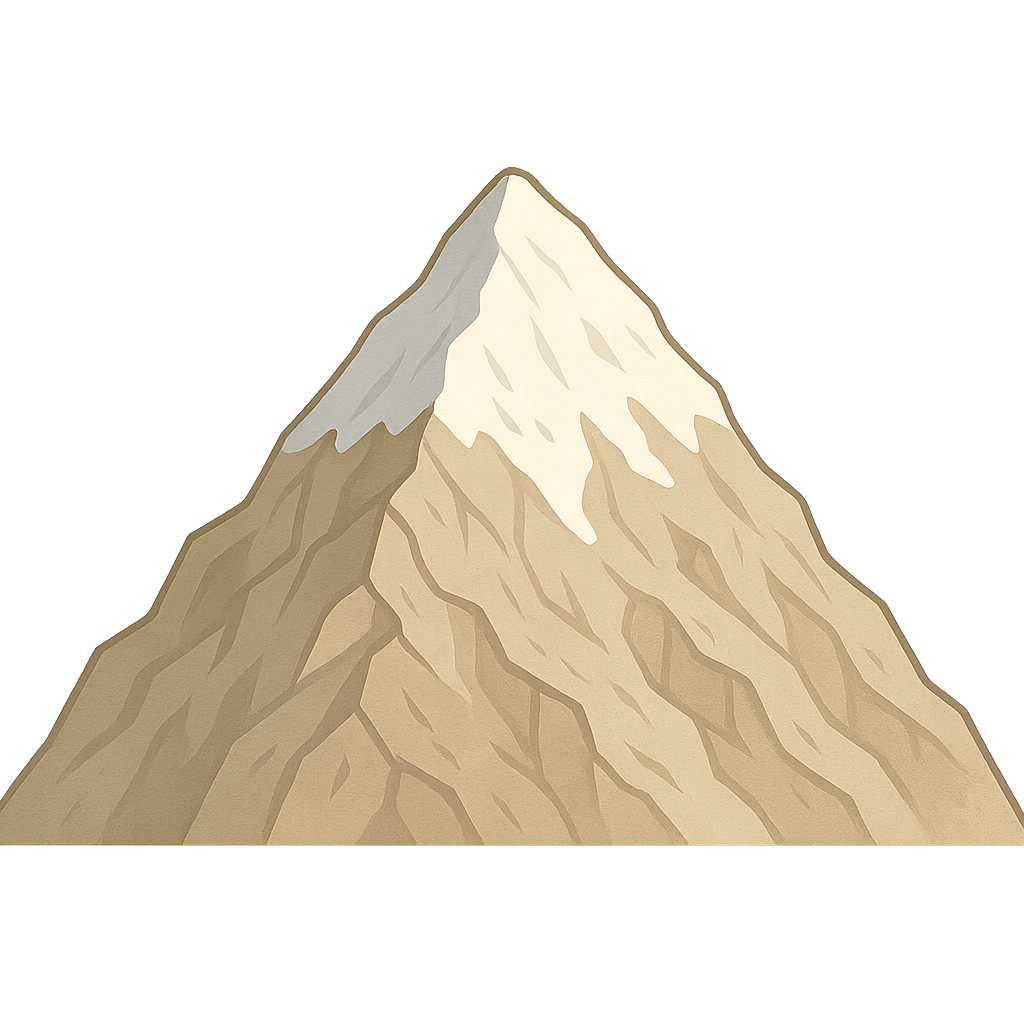The Mountain Who Touches the Stars
I am a whisper on the wind, a giant of rock and ice that scrapes the edge of the sky. From my peak, the world curves away into a soft blue haze, and the stars at night feel so close you could almost gather them like sparkling dust. The wind is my constant companion, a howling song that whips prayer flags into a blur of color. For centuries, the people who live in my shadow have known me by beautiful names. To some, I am Sagarmatha, the ‘Forehead in the Sky.’ To others, I am Chomolungma, the ‘Goddess Mother of the World.’ These names capture my spirit, my ancient power. But the world came to know me by another name, one given by mapmakers from far away. They called me Mount Everest.
My story began long before any human saw me, over 50 million years ago. Imagine two enormous pieces of the Earth’s crust, like giant, slow-moving puzzle pieces called plates. The land that is now India was moving north, pushing with incredible force against the land of Asia. This slow, powerful crash caused the ground to wrinkle and fold, pushing it higher and higher. I am one of those wrinkles, pushed up toward the sun over millions of years. I am still growing, just a little bit taller each year, as those great forces continue their work deep beneath the ground. For centuries, the Sherpa people have made their homes in my valleys. They don’t see me as just a pile of rock; they see me as a sacred place, a powerful goddess who must be respected. They know my moods, the sound of ice shifting on my slopes, and the safest paths through my treacherous passes. They have always treated me with reverence.
For a long, long time, only the people of Nepal and Tibet knew of my true majesty. But then, in the 1800s, people from Great Britain started a huge project called the Great Trigonometrical Survey to map all of India and the great mountains to the north. They used special tools to measure angles and distances, trying to figure out which of my fellow Himalayan peaks was the tallest. In 1852, a brilliant Indian mathematician named Radhanath Sikdar was working with the numbers. After many difficult calculations, he rushed to his boss and announced that a peak they called ‘Peak XV’ was the highest in the world. It wasn't until 1856 that the world officially heard the news. Suddenly, people everywhere knew my name, and a new dream was born in their hearts: the dream of standing on my summit, the very top of the world.
Many tried and failed, defeated by my freezing storms and thin air. But the dream lived on. In 1953, a team of climbers came, filled with hope and determination. Among them were two men who would become legends. One was Tenzing Norgay, a Sherpa man who had grown up in my shadow. He was strong, experienced, and respected my power. The other was Edmund Hillary, a tall beekeeper from a faraway country called New Zealand, who was known for his incredible endurance. They were not just climbers; they were partners. They relied on each other completely. On the final part of their journey, they worked as a team, cutting steps into the ice and helping each other over dangerous cliffs. The air was so thin it was hard to breathe, and the wind was bitterly cold. Finally, on the morning of May 29, 1953, they took the last steps. They stood together on my summit, two tiny figures on the roof of the world. They didn’t shout or cheer. They shared a quiet, powerful moment of awe and accomplishment, looking out at the world below.
That incredible achievement inspired countless others. In 1975, a courageous woman from Japan named Junko Tabei became the first woman to stand where Tenzing and Edmund had stood. People from all over the world now come to test their limits against my slopes. I have learned that I am not a prize to be conquered. I am a great teacher. I teach people about courage, about working together, and about the deep importance of respecting the power of nature. When people push themselves to reach my summit, they learn something about themselves. I stand as a reminder that the greatest views often come after the hardest climbs, and that everyone has their own ‘mountains’ to climb in life.
Reading Comprehension Questions
Click to see answer
